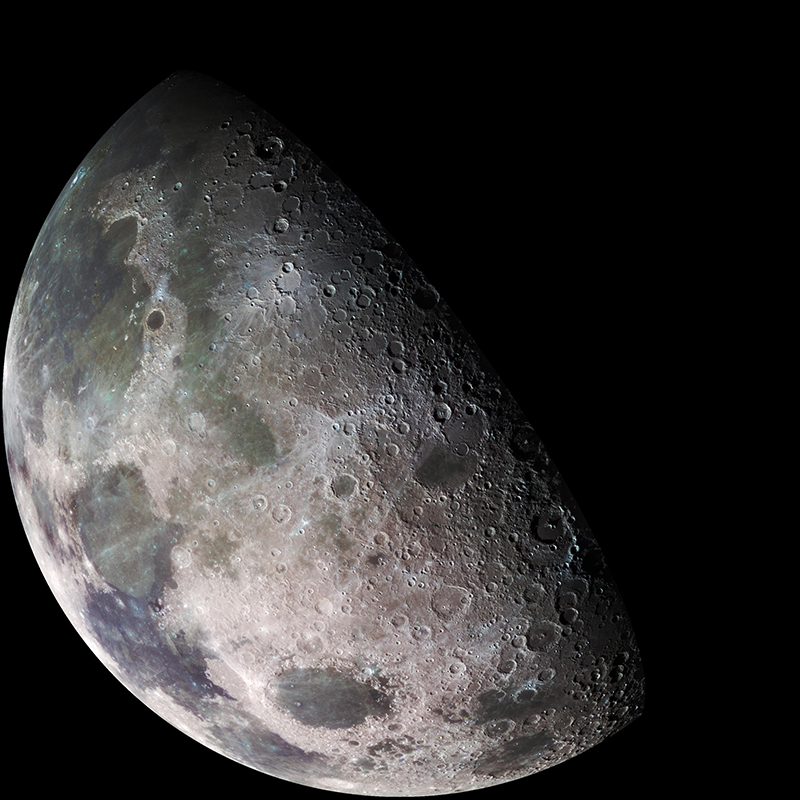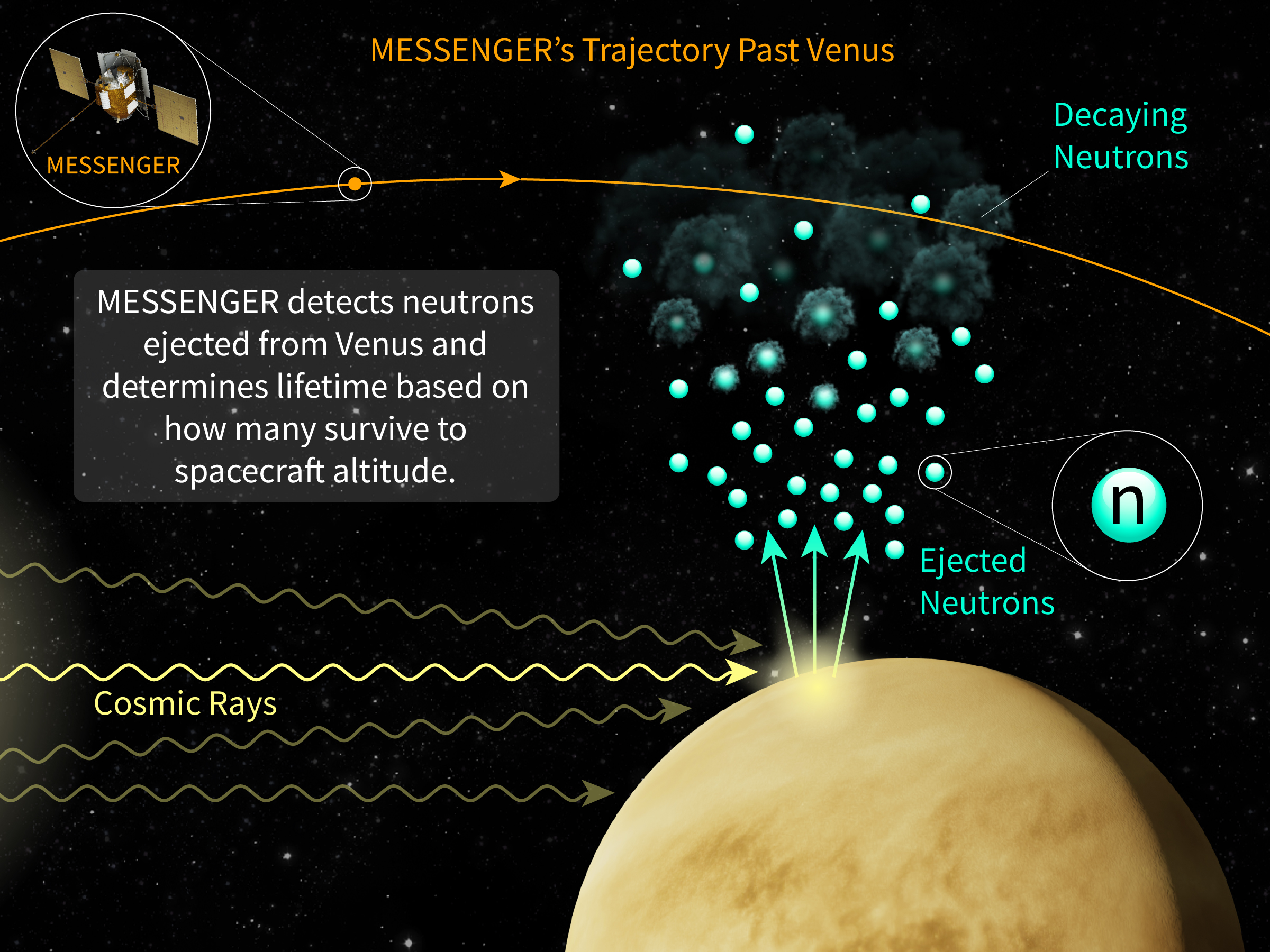Press Release
MESSENGER Shows How a Spacecraft Could End Neutron Lifetime Stalemate
Neutrons aren’t a model of resilience when it comes to living a single life. Strip one from an atom’s nucleus and it will quickly disintegrate into an electron and a proton. But scientists can’t determine how quickly, despite decades of trying, and that’s problematic because knowing that lifetime is key to understanding the formation of the elements after the Big Bang.
Now, a team of researchers from the Johns Hopkins Applied Physics Laboratory (APL) in Laurel, Maryland, and Durham University in England has provided a way that could end the decades-long stalemate. Using data from NASA’s MErcury Surface, Space ENvironment, GEochemistry, and Ranging (MESSENGER) spacecraft, the team shows that the lifetime of a neutron can be measured from space. The findings were reported June 11 in the journal Physical Review Research.
“This is the first time anyone has ever measured the neutron lifetime from space,” said Jack Wilson, a scientist at APL and the study’s lead author. “It proves the feasibility of this method, which could one day be the way to resolve this anomaly.”
A Persisting Mystery
Since the early 1990s, scientists have disagreed about how long lone neutrons last, mainly because the two methods used so far give highly precise results that don’t line up.
The “bottle” method traps neutrons in a bottle and tracks how long they take to radioactively decay, which on average is around 14 minutes and 39 seconds. The “beam” technique instead fires a beam of neutrons and tallies the number of protons created from radioactive decay. On average, this takes about 14 minutes and 48 seconds — nine seconds longer than the bottle method.
Nine seconds isn’t much, but relative to the uncertainty in either method’s measurements — at most two seconds — it’s enormous.
Researchers using the bottle and beam measurements continue working to resolve the discrepancy with their techniques. But since 1990, researchers have discussed an alternative way to measure the neutron lifetime: from space.
Cosmic rays colliding with atoms on a planet’s surface or atmosphere set loose neutrons that gradually wind into outer space against the pull of gravity. The farther the neutrons travel from the planet’s surface, the more time passes, and the more neutrons will radioactively decay. By comparing the number of neutrons at various altitudes, a spacecraft could estimate the neutron lifetime.
No mission or instrument has ever been funded to put the idea into practice. But MESSENGER happened to have the right kind of tool that collected the right kind of data.
“Of all past spacecraft measurements, MESSENGER’s are well suited to measuring the neutron lifetime,” said David Lawrence, an APL planetary scientist and study coauthor.

